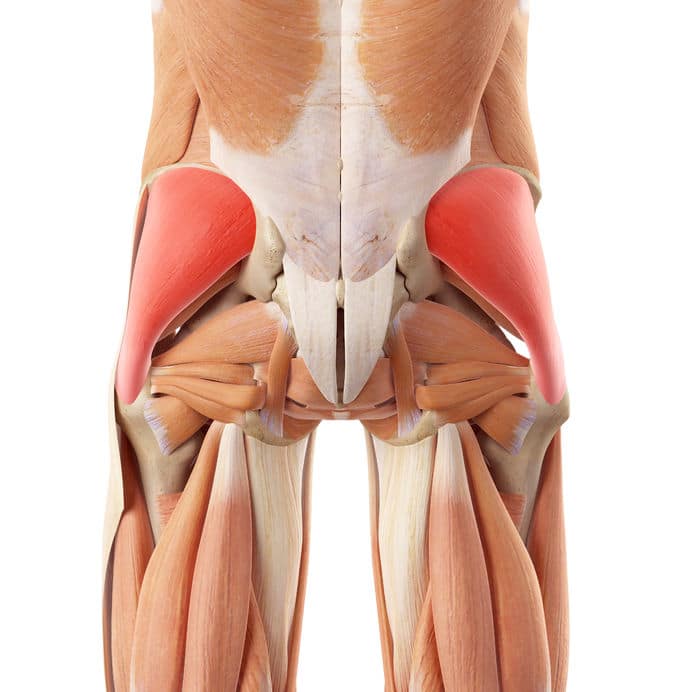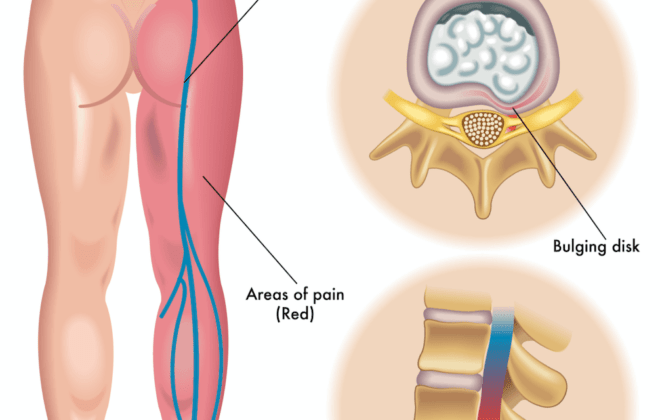Strengthen Weak Hips With These 5 Top Glute Medius Exercises
Are you experiencing hip pain or discomfort during your workouts? Do you want to improve your athletic performance and overall health? Look no further than your gluteus medius muscle!
This small but mighty muscle plays a crucial role in hip stability and movement, and strengthening it can have a big impact on your body’s posture, balance, and strength.
In this article, I will share with you the top 5 gluteus medius exercises to help you strengthen your hips and improve your overall health.
So, whether you’re an athlete looking to improve your performance or simply want to alleviate hip pain, keep reading to learn how to strengthen your gluteus medius muscles and transform your body.

Understanding The Anatomy And Function Of The Gluteus Medius
The gluteus medius is a hip muscle located on the outer surface of the pelvis. It originates from the ilium and inserts into the greater trochanter of the femur.
Its primary functions are to abduct the thigh (pull away from the body) and to medially rotate the thigh (internal rotation). It also helps to stabilize the pelvis during single-leg stance.
Why It’s Important To Strengthen Your Gluteus Medius
The gluteus medius is an important stabilizing muscle for the hip joint, which helps support the entire body when standing, walking, running, and performing other activities.
Strengthening the gluteus medius helps to maintain stability and proper alignment of the hip, pelvis, and lower back, reducing the risk of injuries and promoting optimal performance. It may also be beneficial in helping to reduce knee pain.
Additionally, strengthening the gluteus medius can help to improve balance, coordination, and overall body mechanics.
Signs Of Weak Gluteus Medius Muscles
There are multiple potential signs of a weak gluteus medius muscle. Here is a short list.
1. Hip pain or discomfort while walking
2. Difficulty standing on one foot (associated to Trendelenburg gait)
3. Lower back or hip pain while lying on side
4. Anterior pelvic tilt
5. Difficulty rising from a seated position
6. Knee pain while running or walking up stairs
7. Hip shifting during side to side activities
8. Difficulty standing up from a squat position
9. Uneven wear on shoes
10. Limited hip abduction range of motion
Gluteus Medius Strengthening Exercises
Glute medius exercises are combined with the other glute muscles since its virtually impossible to completely isolate this muscle.
Exercises for the gluteus medius can progress from simple to more complex, as you will find in the list below.
-
Sidelying Hip Abduction
This exercise is often lumped into the “glute medius activation exercises” type of list. This is mostly because the muscle is most often associated with hip abduction. It is the primary muscle, but the gluteus minimus and tensor fascia lata (TFL) are assisters in this movement as well.
The starting position for this movement is sidelying with legs straight in line with your body. As the leg lifts, maintain your pelvis in neutral and slightly reach the toes away from you to further emphasize the glute medius.
This exercise is usually performed for higher repetitions such as 15-20 or more. For increased resistance, ankle weights can be used.
-
Sidelying Clamshell
The clamshell exercise with strengthen the gluteus medius but also the glute max and deeper external hip rotation muscles such as the piriformis.
This exercise is started in the sidelying position with knees stacked and feet on top of each other. Hip flexion is around 60 degrees and knees are bent to approximately 90 degrees.
While maintaining the knee bent and feet keeping contact, lift the knee up until it reaches just higher than hip level. For an added challenge, shift the top knee forward a bit so that it is in front of the bottom knee. This positions the hip into more abduction, extension, and external rotation.
Most commonly the challenge is increased by using an exercise band. Adding a resistance band may be too much for some, depending on fitness level. In that case, body weight of the top leg will get the job done.
Average recommended repetitions on this exercise can vary, from 10-20. Heavy resistance bands can be used, but at a certain point it can be difficult to maintain your form, so moving to a seated hip abduction machine may be a better option.
-
Supine Banded Glute Bridge
The glute bridge is a great all-around glute exercise with a focus more on hip extension than abduction and external rotation. However, the glute medius can be forced to work harder in this movement by adding a resistance band around the knees.
The starting position is laying on your back with knees bent and feet flat on the ground, approximately 12 inches from the butt, and feet hip width apart or wider.
Gently flatten the lower back against the ground with a posterior pelvic tilt, press the heels down into the ground, and squeeze your glutes to lift your hips up as high as possible.
As the hips extend up, press your knees out into the resistance band. You will feel a strong activation of the gluteal muscles.
Pausing at the top for a few seconds can make the exercise more effective and establish coordination at the end of the range of motion. Hold for 1-2 seconds or more, then lower back to the starting position.
Since this exercise recruits many of the stronger lower body muscles, it usually requires added resistance across the waist, or to be performed in a single leg version.
Higher reps are often recommended in the beginning before building up resistance, so 15-20 repetitions is a good place to start.
-
Lateral Band Walks
This exercise is a fun and useful upright exercise to strengthen weak gluteus medius muscles in the frontal plane of movement.
This exercise is performed in the standing position by placing a resistance band around the ankles or knees. It can be performed with legs straight or knees bent.
While maintaining good upright posture, take a step out to one side with one leg. Then, while maintaining tension on the band, follow with the opposite leg.
You can continue stepping in one direction for a desired number of repetitions OR time, then return back to the starting position using the opposite leg as the “lead” leg.
Using a timer is often the easiest method for this exercise. I often recommend performing the exercise continuously for 60-90 seconds.
-
Barbell Hip Thrust
The barbell hip thrust is a staple for training the gluteus maximus (glute max), but it is probably one of THE best exercises to address weak glutes or hip instability.
To perform this exercise comfortably, you will need a soft foam device under the bar to protect your hip bone and relieve discomfort. At lighter weights the bar may be fine without this, but as the weights get progressively heavier, this can become quite uncomfortable.
Start by laying on your back (OR back against the edge of a weight bench) and placing the barbell just under the hip bones (ASIS bones).
Feet should be placed just wider than hip width apart. You can of course go much wider depending on what is most comfortable for the way your unique hips are built, and also what helps you feel the muscle contraction best.
As you lift your hips, the goal is to get as much hip extension as possible without excessively arching your lumbar spine. This is mostly going to be dependent on your hip flexor flexibility.
Hold for the desired amount of time, then lower back to the starting position. Then repeat.
Repetition ranges and exercise prescriptions for the barbell hip thrust are VAST. It is an exercise that can be done for low repetitions with very heavy weights, or high repetitions with light weights.
I suggest as usual starting with 15-20 repetitions to get the hang of the technique and gain comfort controlling the bar before adding more weight to the bar.
How Often To Train The Gluteus Medius
When it comes to training protocols for the glute med, there are a number of different variations possible.
In my office with personal clients, I almost always start with a program that fits their schedule and desired results. If building glutes is the primary focus, then picking 1-2 exercises per day, and performing them for ONE SET only works very well.
Once the “mind to muscle” connection is built and adequate intensity can be used without next-day muscle soreness, a second set can be added.
Over the weeks, addition exercises can be rotated in for variety and to train different joint angles.
Training the glutes everyday is NOT necessary for results. You can easily build them into a training program that targets them 2-3x per week and make great progress. Exercise routines should always be tailored to the individual.
When You Should Train The Glute Medius
Glute med exercises can really be performed at any point during a workout session, but since they are thought of as smaller, more slow-twitch muscles (endurance based), its common for them to be placed toward the end of the workout.
The obvious exception to this would be when performing the barbell hip thrust. This movement may be the primary focus of the workout, so it can often be performed as the first exercise.
Gluteus Medius Pain and Exercise
As always with pain, underlying pathology especially of the hip joint, should be ruled out before starting any exercise routine.
Quite often, when there are chronic pain issues with the glute medius (including trigger points in the glute medius), strengthening is the recommendation. This should be initiated under the guidance of a knowledgeable professional.
Being too aggressive too soon with gluteus medius exercises can simply lead to pain flare ups and inability to train the muscle frequently enough to make the progress necessary to get past the pain.
Be smart and consult a pro!
Conclusion:
While there are many other gluteus medius exercises, the list above includes the most common and useful movements. Having strong and functional hip muscles is key to long term health and prevention.
Sam Visnic
Most Popular Posts
Categories
- Deep Gluteal Pain Syndrome (8)
- Deltoids (2)
- Foam Rolling (2)
- Glutes (9)
- Hamstrings (5)
- Hypnosis for Pain (3)
- Lats (2)
- Levator Scapulae (4)
- Lifestyle (8)
- Massage Therapy (39)
- Mobility (21)
- Movement and Exercise (19)
- Muscles (22)
- Nutrition (2)
- Obliques (1)
- Pain (25)
- Pectorals (3)
- Piriformis (3)
- Plantar Fasciitis (11)
- Psoas (11)
- Quadratus Lumborum (3)
- Quadriceps (2)
- Rhomboids (3)
- Sciatica (1)
- Serratus Anterior (1)
- SI Joint (14)
- Sternocleidomastoid (1)
- Stretching (18)
- Subscapularis (1)
- TMJ (2)
- Trapezius (1)
- Uncategorized (12)








